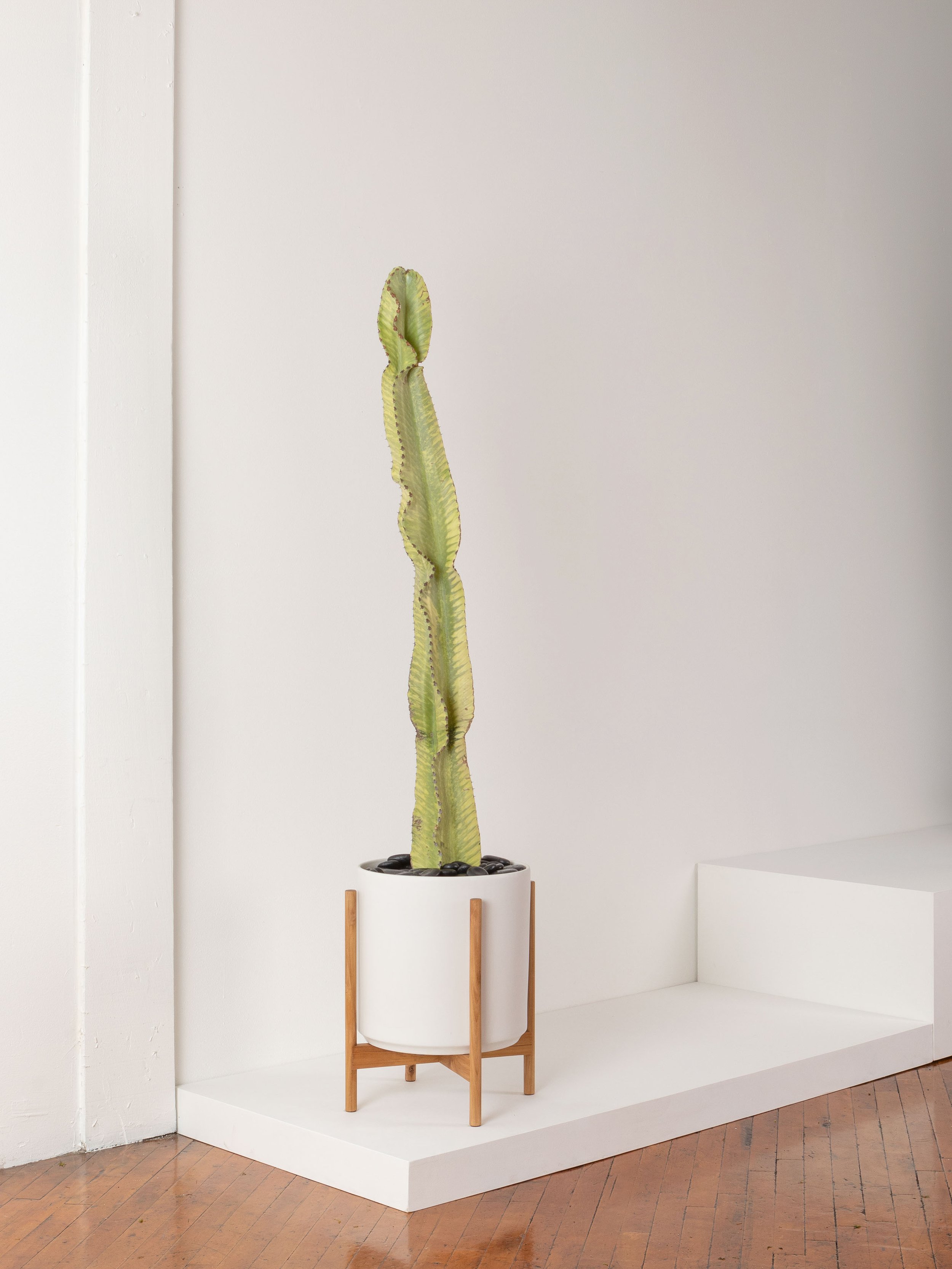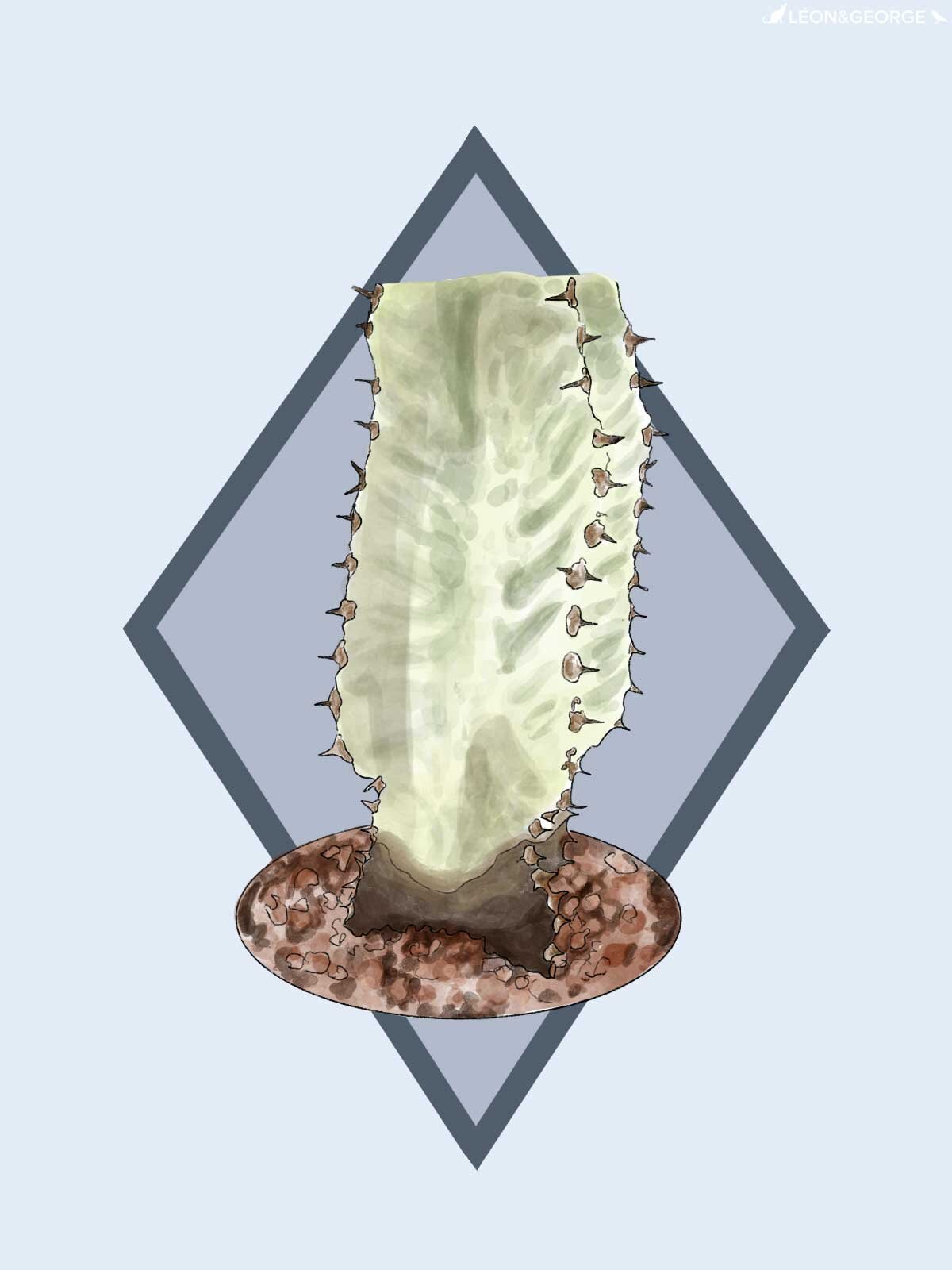How to Care For and Grow Your Desert Cactus AKA Euphorbia Ammak
The Desert Cactus
AKA euphorbia ammak
The Desert Cactus (or in scientific terms, the Euphorbia Ammak) is a tree-like succulent that thrives with just a bit of water and lots of sunlight. Sometimes referred to as the African Candelabra, the Desert Cactus hails from Saudi Arabia and Yemen and is known for its structural beauty and its ribbed arms edged with spines. Though this plant prefers full sun, it may also flourish in bright indoor conditions, and will undoubtedly elevate any space with its eye-capturing beauty. Read on for simple tips on how to care for the Desert Cactus.
Light REQUIREMENTS FOR THE DESERT CACTUS
Prefers full or direct sun
Can adjust to bright indirect light
Watering your desert cactus
Water sparingly once every two weeks in the summer, and once a month for the rest of the year. Avoid overwatering
cactus growth rate
In prime conditions, the Desert Cactus is a fast grower and can grow to over 8 feet tall indoors
Fertilize lightly (half a dose) once a month in the summer
Now Shipping Nationwide
Our popular Desert Cactus, aka Euphorbia Ammak, is as low maintenance as they come and now ships nationwide.
Common problems with the Desert Cactus
Brown patches or scars - sunburn
Symptom - rough, localized “scabs” or brown patches
Cause - too much sun (yes, this plant can burn!) due to harsh climatic changes (i.e. the plant was grown in a greenhouse with indirect light, then placed in full sun).
Remedy - This is simply a scar and though it is not contagious or will spread, there is nothing you can do about its appearance. By the time your plant is burned, it will already have acclimated to its new environment.
Soft brown areas - overwatering
Symptom - Mushy or soft brown areas
Cause - Too much water or root root
Remedy - Check the roots. If the roots are damaged (wet, slimy, etc), you will need to repot your plant (see below for instructions). If they are not damaged, simply hold off on watering until the bottom of the soil completely dries out.
Powdery mildew disease
Symptom - Coat of white power on and around ribs
Cause - caused by a fungus
Remedy - Test out a commercial fungal control on a small area of the plant before treating the entire plant.
Shop the Desert Cactus at leonandgeorge.com
How to maintain a beautiful and healthy Desert Cactus
Take care of your Desert Cactus and it will take care of you! Below are simple tips to continue caring for your Desert Cactus over time.
Pruning - The Desert Cactus can often grow very tall with many arms, resulting in a “top-heavy” plant that could potentially topple over. If this is the case, time to prune! Follow the first step in propagation (listed below) to safely prune your cactus.
Cleaning - With a damp cloth, gently clean between the ribs once a month to remove any collected dust. Alternatively, you may use a small hand broom to brush off dust.
Repotting - Depending on the size of your Desert Cactus, you may need to repot it to ensure it has a big enough base to support the weight of the plant.
When to repot - When the cactus has grown substantially and no longer stands straight in its pot. You may also consider pruning instead of attempting to repot.
Pot sizing - Find a nursery pot that’s 2” in diameter larger than the current pot.
Get your hands dirty - spread out newspaper on the floor, remove the plant from the pot and shake off as much of the old soil as possible so that you have clean roots. Place the plant in the center of the pot, add new soil (be sure to use cactus and succulent potting mix!) and pat down firmly. You may need to use a stake to support the weight of your cactus until it fully roots. Your plant will take 2-4 weeks to settle from the shock and adjust to its new home.
Shop the Desert Cactus at leonandgeorge.com
How to propagate the Desert Cactus
Whether your Desert Cactus needs a trim, or you’d like to create new plants, propagating the Desert Cactus is relatively simple (though should be approached with care!). The best way to propagate the Desert Cactus is by using cuttings.
Prepare for cutting - The safest way to cut your cactus is to lay it down horizontally if possible, and use a sharp, clean, serrated knife. This plant can have a sticky sap that can irritate skin and eyes when cut open so make sure to also wear gloves, protect your arms with long sleeves, and also wear protective eyewear. If you are unable to lay the cactus down, you can also achieve the same results with a few extra hands: one person holds while the other cuts.
Determine where you will make the cut - If you’re going to cut your cactus, you should generally cut where the “arm” or branch begins.
Rinse and allow to dry - rinse the cutting with cool water and allow to dry.
Transfer to soil - Once your cactus cutting(s) are dry, place it in fresh soil and put in a warm, dry place. Do not move the plant for at least six weeks -- it will take some time to root and until then, it is very fragile.
Illustrations by our talented plant stylist, Kailie Barnes.
Desert Cactus
With thorns as sharp and tough as its personality, the Desert Cactus is a low maintenance and attractive indoor plant that will draw the attention of anyone.





